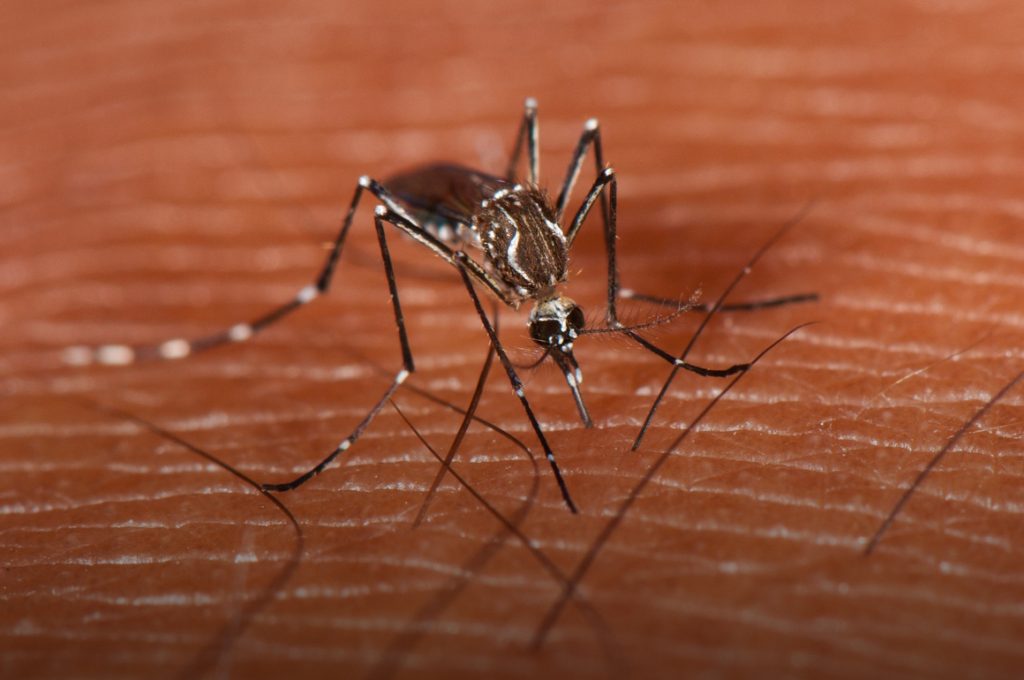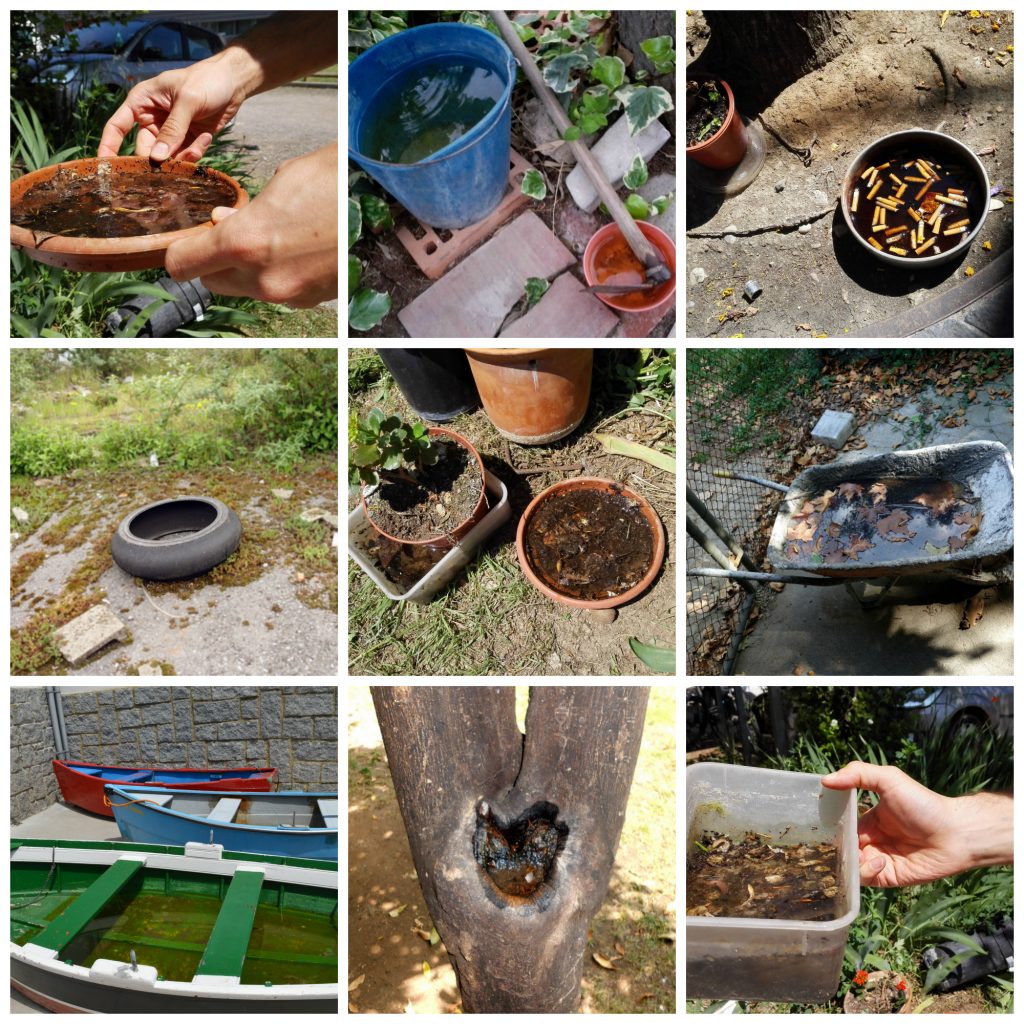Tiger mosquito
(Aedes albopictus)

J.Luís Ordoñez (CC-BY-NC-2.0)

Life cycle.
CHARACTERISTICS
It is an invasive mosquito that comes from the Southeast Asia. In Spain it was detected for the first time in 2004 near Barcelona and currently its presence is known especially in the Mediterranean coast, where it is quite abundant. It can transmit diseases like Zika, dengue and especially chikungunya.
How it behaves?
- It is diurnal and also during twilight, which is the hour of maximum activity.
- It is very connected to the outside and very attracted by the vegetation, which is where it hides.
- Its perfect habitat is the back of the houses, with humidity, shade and breeding sites.
- He gets inside the houses.
- They don’t go far from the place where they were born if he has what he needs (water, shelter, shade and blood). It moves to a radius of 500 m from its place of breeding.
- It flies low, usually does not rise more than a meter and a half, that is why most of the stings are in the legs.
How does it sting?
- It can sting ankles through socks but does not pierce jeans or thick clothes. Sometimes, people believe it but it’s because it’s a mosquito infiltrating force, it gets inside the clothes.
- It stings several times for a single meal of blood, unlike the other mosquitoes. So a single tiger mosquito causes many hives.
What is his life shekel?
- The time of activity of the tiger mosquito begins in May and can last until early November. The adult mosquito flies a short distance off the ground. Since the mosquito is born from the egg, it only takes 6 days to become an adult.

©Roger Eritja www.eritja.com
Small and black with white lines

©Roger Eritja www.eritja.com
White spots in the abdomen and legs
Yellow fever mosquito
(Aedes aegypti)

J.Luís Ordoñez (CC-BY-NC-2.0)
CHARACTERISTICS
It is an African mosquito-borne diseases like yellow fever, dengue, chikungunya and Zika virus. Currently, it is distributed in Africa in countries near the tropic and the subtropics. In Spain there are no populations of Aedes aegypti, but could reach Europe due to globalization and the rising average temperatures. Recently, the Canarian Government has announced the finding of some individuals of yellow fever mosquito at the Fuerteventura island, according to the Entomological Surveillance System actions.

Mark Yokoyama (CC BY-NC-ND 2.0)
Four white lines in a shape of a lyre

©Roger Eritja www.eritja.com
Brown abdomen and legs with white spots
Where do they breed?
They breed in small containers with standing water in urban areas. A female of a tiger mosquito can get to put in a week up to 200 eggs inside a small container. Thanks to Mosquito Alert, citizen help surveillance and control agents by detecting breeding sites on the public road, such as water drains, sewers or ornamental fountains.
AT THE PUBLIC ROAD
- Scuppers and sewers
- Ornamental fountains
- Sources of drinking water with little drainage
- Drain water
- Other spaces with accumulated water
IN YOUR HOME
- Flower pots
- Toys
- Outdoor furniture
- Animal eateries
- Garden tools (eg forklifts)
- Cubes
- Other objects with accumulated water








